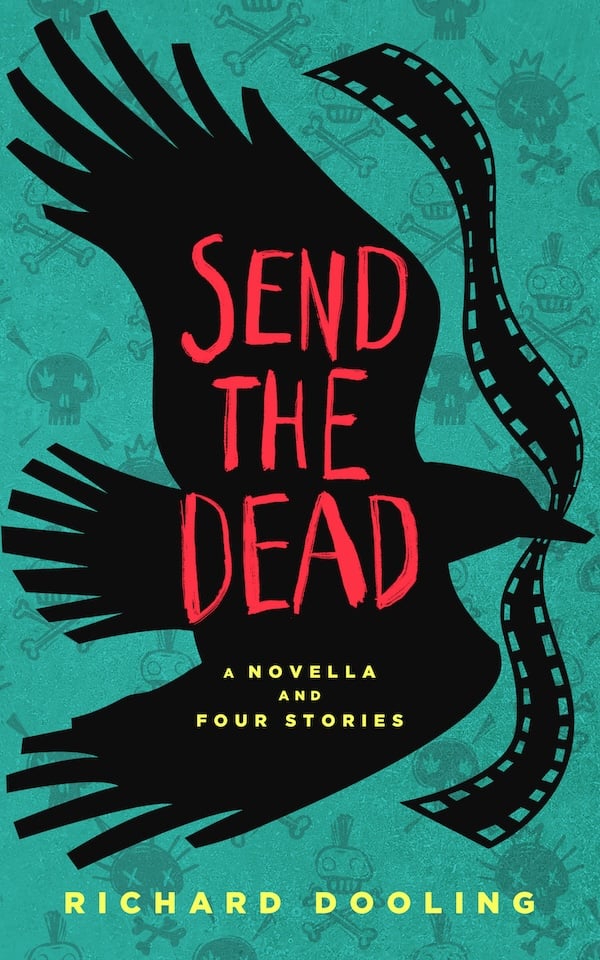I Would Prefer Not To - (#3)

A quarterly miscellany of essays by Richard Dooling and news about his upcoming books. Subscribe here.
Send The Dead
Cover Art
We have cover art! And an October 6th publication date!

Send The Dead
In February of 2002, we escaped a brutal Nebraska winter and vacationed for a week on the island of St. John in the U.S. Virgin Islands. White sandy beaches, turquoise seas, yes, all of that, but over half of St. John is national parkland, most of it forested mountains. I am not a beach person, but I'll do just about anything for a view, and hiking St. John offered amazing vistas over the Caribbean.
I hiked to a few historic sugar plantation ruins, including the famous and scenic Annaberg Sugar Plantation ruins and the less-scenic and, in my opinion, thoroughly haunted Reef Bay Trail and Sugar Plantation ruins. Both date from the 18th century, when sugar was the most precious commodity on earth, and the Caribbean was the best place to grow it.
In those days, sugar was white gold and an instant sensation in Europe, but so expensive that most commoners could not afford even a taste of it. Sugar production also required a massive labor force. Five times the manpower it took to grow cotton or tobacco, because the cane spoiled unless it was processed the same day it was cut. Enter the slave trade, and the Danish plantation owners could be brutal masters. Walk those ruins at dusk, and you will hear cries of anguish from centuries ago.
On other hikes, I learned about the St. John Slave Uprising of 1733, when enslaved West Africans led by Breffu, an Awkwamu warrior princess, rose up and killed more than sixty colonial plantation owners, managers, and their families. The slaves captured the fort in Coral Bay, took control of the island, and held it for six months. The Rebellion was one of the earliest and most successful slave revolts in the Americas, until the Danish governor hired an army of French maroon hunters from Martinique. Led by the sadist, Commander Chevalier de Longueville, the maroon hunters pursued, captured, and tortured all of the surviving rebels, except those who took their own lives to avoid such a fate.
Soon rebellion stories occupied my reading list and my dreams, but what to do with them? I went from thinking I'd write an essay, no, too short. A nonfiction book, no, too long. A screenplay, which I almost sold, twice! Ah, Hollywood fish stories. A historical novel, already been done. Night Of The Silent Drums, by John L. Anderson. Call it process of elimination, novella was the only form left, unless I wanted to take a stab at epic poetry in my old age. Instead of historical fiction, I wrote a story about filmmakers making a movie, shooting on location in St. John, a movie about the St. John Slave Uprising of 1733. A modern tale, but told against the gore and glory of history.
Pub Date
Send The Dead will be released on Amazon as a print paperback and as a Kindle ebook on October 6th, 2025. The novella and story collection will also participate in Amazon's Kindle Unlimited program.
Kindle Ebook Preorders
Kindle users may preorder Send The Dead at Amazon for only $2.99, and the ebook will appear on their Kindle devices on the release date. Print copies can't be ordered until the October 6th release date. I will try to provide advance notice of any giveaways on Goodreads or Amazon.
I will tell you much more about the novella and each of the four short stories soon.
Issue #3
This is Issue #3 of I Would Prefer Not To, the Send The Dead Cover Art Issue.
- Issue #2, the Warren Buffett Issue.
- Issue #1 welcomes subscribers to I Would Prefer Not To, a quarterly miscellany published by Richard Dooling. Find other issues at the Archives.